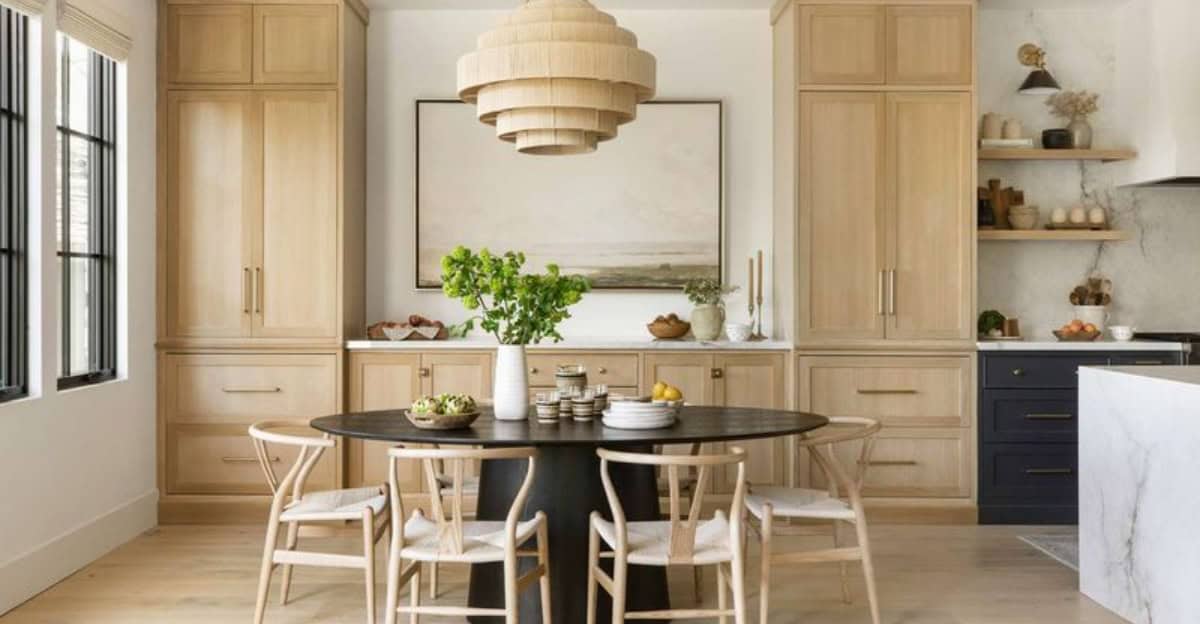Scandinavian kitchens are renowned for their sleek design, functionality, and impeccable organization.
Rooted in simplicity and minimalism, these kitchens prioritize efficient use of space, quality materials, and a clutter-free environment.
This approach not only enhances the aesthetic appeal but also ensures a practical and efficient cooking experience.
Discover the 13 compelling reasons why these kitchens are considered the epitome of organization.
1. Minimalist Design
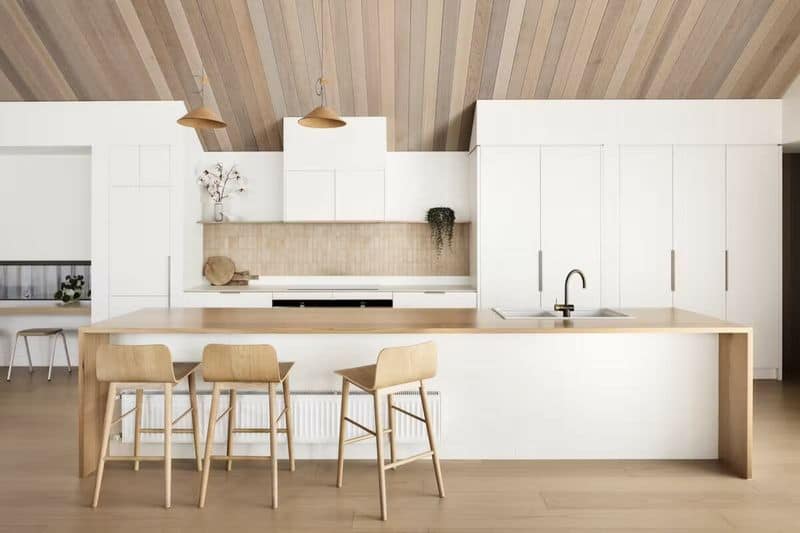
The minimalist design of Scandinavian kitchens emphasizes functionality and simplicity. With clean lines and uncluttered surfaces, these spaces reflect a serene environment.
The neutral color palette, often dominated by whites and grays, enhances the sense of order. Scandinavian kitchens avoid excessive decoration, focusing instead on essential elements that define the space.
This minimalist approach not only fosters organization but also promotes a calming atmosphere.
By eliminating unnecessary items, the kitchen becomes a place where everything has a purpose, contributing to an overall sense of harmony and balance.
2. Efficient Storage Solutions
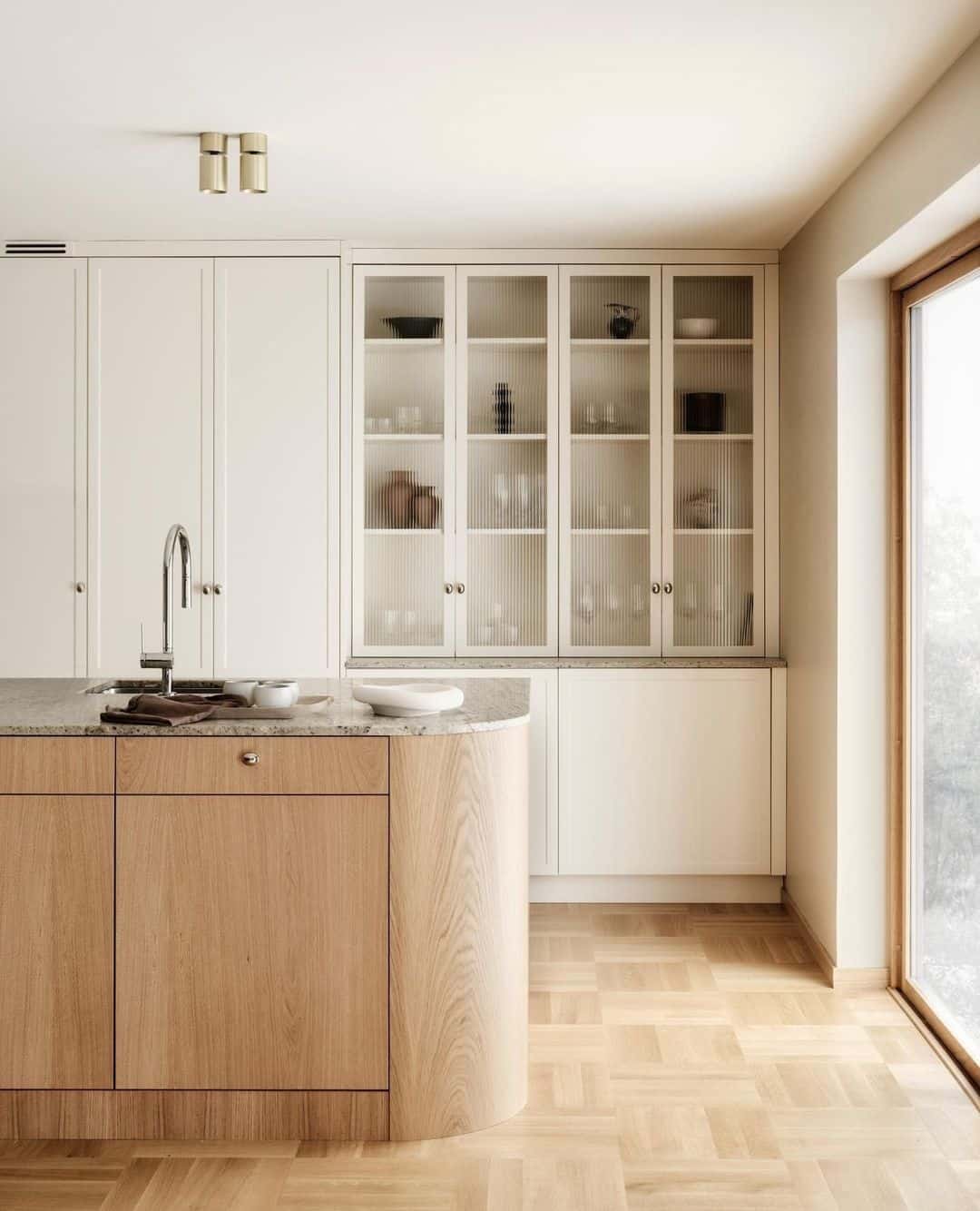
Scandinavian kitchens excel in providing efficient storage solutions that maximize space. Features like pull-out drawers and smart cabinetry make it easy to access items.
Open shelving adds aesthetic value while keeping essentials within reach. These kitchens are designed to store items in a way that maintains a clean and organized look.
By incorporating innovative storage options, Scandinavian kitchens ensure that every inch of space is utilized effectively.
The result is a clutter-free environment where everything has its place, enabling homeowners to maintain a tidy and efficient kitchen.
3. Natural Light Utilization

Natural light plays a crucial role in Scandinavian kitchen design. Large windows allow sunlight to flood the space, creating an inviting and open atmosphere.
The abundance of natural light reduces the need for artificial lighting during the day, enhancing energy efficiency. It also highlights the clean lines and simplicity of the kitchen’s design.
By utilizing natural light, Scandinavian kitchens maintain a bright and airy feel, which contributes to a sense of spaciousness and order.
This design element not only enhances the aesthetic appeal but also supports an eco-friendly lifestyle.
4. Quality Materials

Quality materials are a hallmark of Scandinavian kitchens. The use of wood, stone, and other high-quality materials ensures durability and adds a touch of elegance.
These materials are chosen not only for their aesthetic appeal but also for their practical benefits. Wood, for example, provides warmth while being easy to maintain.
Stone countertops offer a sleek look and are highly resistant to wear and tear.
By investing in quality materials, Scandinavian kitchens achieve a refined and cohesive look that stands the test of time, contributing to both organization and style.
5. Color Palette

The color palette in Scandinavian kitchens is deliberately chosen to enhance organization and calmness.
Whites, grays, and soft pastels dominate, providing a neutral backdrop that highlights clean lines and minimalism.
This palette is both soothing and versatile, allowing for personal touches without overwhelming the space.
By sticking to a limited color range, these kitchens avoid visual clutter, creating a coherent and organized look.
The subtle hues complement natural materials and enhance the overall design, resulting in a space that feels both homely and sophisticated.
6. Open Layout

An open layout is a defining feature of Scandinavian kitchens, promoting a sense of spaciousness and connection. This design eliminates barriers, allowing for a seamless integration with adjacent living areas.
By maintaining unobstructed views, the kitchen feels larger and more inviting. The open layout also facilitates movement and interaction, making it ideal for entertaining guests.
This configuration supports an efficient workflow, contributing to the kitchen’s organized nature.
The result is a harmonious space that encourages social interaction while maintaining the practical aspects of a well-organized kitchen.
7. Functional Furniture

Functional furniture is key to the organization in Scandinavian kitchens. Items like multi-purpose islands and sleek seating offer both utility and style.
These pieces are designed to maximize space without sacrificing aesthetics.
A kitchen island, for example, can serve as a prep area, dining table, and storage unit. Seating options are often streamlined, fitting seamlessly into the kitchen’s design.
By choosing furniture that aligns with the minimalist ethos, Scandinavian kitchens maintain efficiency and order.
This approach ensures that the space remains clutter-free, with each piece serving a specific function and enhancing the overall design.
8. Sustainable Practices
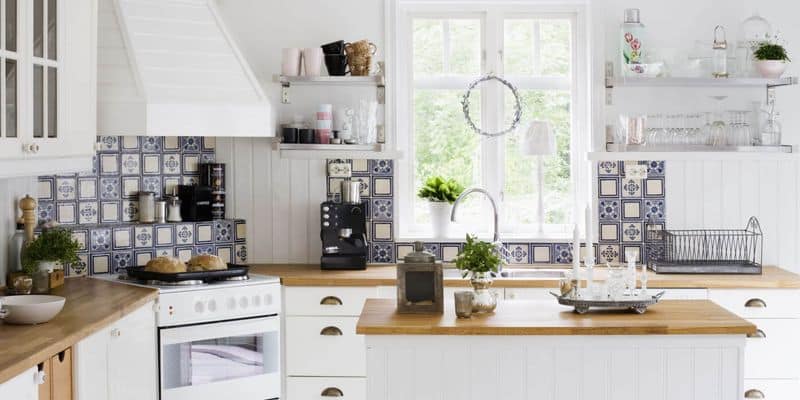
Sustainability is a core principle in Scandinavian kitchen design. By incorporating energy-efficient appliances and recycling systems, these kitchens reduce their environmental impact.
The use of sustainable materials, such as FSC-certified wood, further supports eco-friendly practices. These elements are integrated without compromising on style or function.
Scandinavian kitchens demonstrate that sustainability can coexist with aesthetics, fostering a responsible and organized environment.
By prioritizing sustainable practices, these kitchens not only contribute to a healthier planet but also inspire homeowners to adopt greener habits, reinforcing the organized and conscientious nature of the space.
9. Innovative Technology

Innovative technology plays a pivotal role in the organization of Scandinavian kitchens. Smart appliances and devices enhance functionality and efficiency.
Features like voice-activated assistants and smart refrigerators simplify daily tasks, allowing for seamless operation.
These technologies are integrated into the kitchen’s design, maintaining the minimalist aesthetic.
By embracing modern technology, Scandinavian kitchens optimize the cooking experience, ensuring that everything is within easy reach and easy to control.
This blend of technology and design creates a space that is not only organized but also future-ready, catering to the needs of contemporary living.
10. Clever Use of Space

The clever use of space is a hallmark of Scandinavian kitchen design. Solutions like corner cabinets and wall-mounted storage ensure that even the smallest areas are utilized effectively.
These kitchens maximize every inch, providing ample storage without overcrowding. This approach allows for a tidy and organized space, where essentials are easily accessible.
By employing creative storage solutions, Scandinavian kitchens maintain a clean look that is both functional and visually appealing.
This design ethos ensures that the kitchen remains clutter-free, with space optimized to enhance the cooking and dining experience.
11. Natural Elements

Natural elements are integral to the design of Scandinavian kitchens, promoting a connection with nature. Indoor plants and wooden accents introduce warmth and vitality, enhancing the space’s ambiance.
These elements are carefully selected to complement the minimalist design, adding texture and interest. By incorporating nature into the kitchen, a sense of tranquility and balance is achieved.
This not only contributes to the aesthetic appeal but also supports a healthy and inviting environment.
By blending natural elements with functional design, Scandinavian kitchens create a harmonious space that feels both organic and organized.
12. Ergonomic Design

Ergonomic design is a key feature of Scandinavian kitchens, ensuring comfort and efficiency. The layout is thoughtfully planned, with accessible counter heights and user-friendly appliance placement.
This approach minimizes strain and enhances the cooking experience. By prioritizing ergonomics, these kitchens support a seamless workflow, contributing to their organized nature.
The design considers the user’s needs, creating a space that is both functional and comfortable.
This attention to detail ensures that the kitchen remains not only organized but also a pleasure to work in, enhancing the overall experience of the home.
13. Adaptable Design
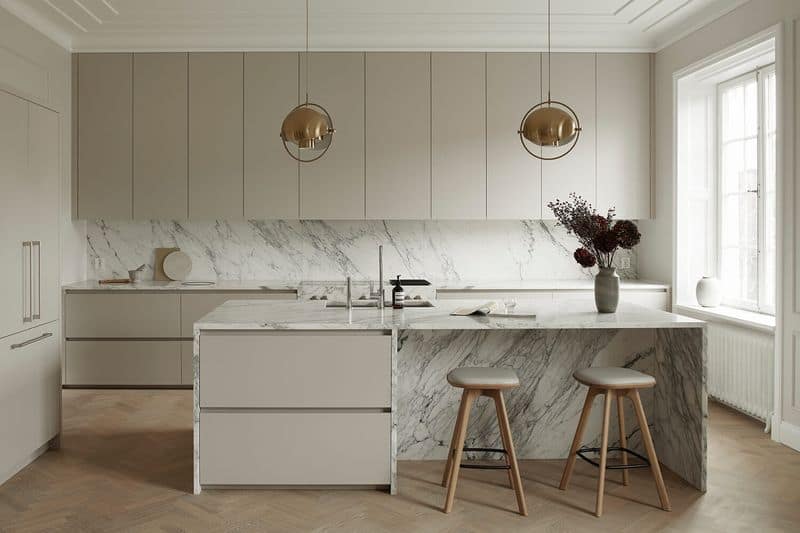
Adaptable design features make Scandinavian kitchens versatile and future-proof.
Modular elements allow homeowners to customize the space according to their needs. This adaptability ensures that the kitchen can evolve with changing lifestyles.
By incorporating elements that can be easily adjusted, these kitchens remain organized and functional.
The design supports a dynamic environment, where spaces can be reconfigured without compromising on aesthetics.
This flexibility ensures that Scandinavian kitchens continue to meet the demands of modern living, providing a versatile and organized backdrop for culinary creativity and family gatherings.

